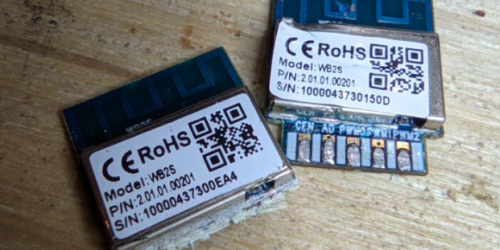Linked-in Collec…Connecting

 Connecting to people on social media has its place, and I have been using a number of social platforms over recent times for rapid viewing of up-to-the-second information and keeping in touch with more people that it would otherwise humanly be possible.
Connecting to people on social media has its place, and I have been using a number of social platforms over recent times for rapid viewing of up-to-the-second information and keeping in touch with more people that it would otherwise humanly be possible.
Facebook over the past few years has improved their privacy settings (enough that I will actually use it now) but still doesn’t have the same usability as platforms such as Google+ that have privacy and the user in mind from the ground up design, rather than throwing it on top of a tool to target ads to people’s friends-friends-friends.
I regularly interview and employ new people at my ‘real-job’ and currently have a premium Linked-in account to enable a little more assistance with finding the right people. What I do find interesting is the rise of Linked-in and how people see it as a ‘business tool’ rather than personal, and therefore often aren’t as wary of the personal privacy issues, in the same ways as they are starting to find out with platforms as Facebook.
Be careful what you share
It is easy to have private information shown such as phone number and personal email address. Don’t put it there if you don’t want people to access it. I have pointed out to a number of people that their personal email address or phone number was in full view… often it is because that was the one they signed up with.
Who owns your connections?
There have also been cases of ownership disputes with linked-in as to who owns your ‘connections’ when you work for someone else. Is Linked-in the modern Rolodex? When you leave a company, should you remove all your company contacts? Your clients? My advice would be to treat Linked-in as you would Facebook, i.e. a personal tool. This should avoid any ownership disputes in the future. Sign up with a personal email address (keep that hidden) but you can still list your company address.

Remember also, that people can sometimes leave a company with little to no notice (for many reasons). Don’t think that you will always get a chance to access your company email on your final day employed. If your account is connected with your work email address, how will you log in after you leave? How do you know your current employer won’t ‘update your Linked-in account for you’… (or just delete it as is often the case).
Is your profile correct?
On the flipside, there have also been cases where people have left a company and not updated their company details. If a company has access no access to your account, they cannot update your details so you should as soon as you possibly can. It can be argued that if you say on Linked-in that you are ‘Sale Vice President of Acme Holdings’ but actually aren’t because you have left (or in a case I know of… been moved on…) having this on your Linked-in profile is tantamount to fraud. Ensure you fix it, even if you have to put ‘self-employed’, or ‘on-sabbatical’ for a few months.
Oh and don’t think as an employer or Linked-in member that the Linked-in support team will help you resolve the above two issues , they really don’t want to spend time resolving ownership or employment disputes (and generally won’t, unless you spend a bit of money with them).
The collection trend
 What amazes me most however is the trend to blindly accept connection requests on Linked-in. I guess people value employment and don’t see any harm in connecting to people they don’t know, in case it opens another door elsewhere or gets them on a list with a recruiter somewhere. Apple might finally discover how talented they are if Tim Cook was just 3 degrees of separation away.
What amazes me most however is the trend to blindly accept connection requests on Linked-in. I guess people value employment and don’t see any harm in connecting to people they don’t know, in case it opens another door elsewhere or gets them on a list with a recruiter somewhere. Apple might finally discover how talented they are if Tim Cook was just 3 degrees of separation away.
When I connect with someone that asks me, my first rule of thumb is that if know them personally and am interested in connecting in a business sense then I’ll usually oblige. That might rule out Aunt Bettie or even my local electrician… dispute the face that they might be a reasonable electrician. I know how to contact my sparkie, and don’t really need them to try and sell house-wiring services to my other business colleagues sorry.
If I don’t immediately know the requester (maybe I have just forgotten who they are!), I will investigate to see who else I know that is connected to them. Yes, I check. In the majority I find that even the randoms who try and connect to me I find at least two or three others I know that are connected already. I always ask my colleagues that are connected with them ‘do you know this person?’, and usually the answer is that they have never me them, but ‘they asked me to connect’ so I just blindly pressed the ‘OK’ button. Half the time they don’t even remember saying yes.
The last easy test is to check how many Linked-in connections the requester has. It is often the case that people have a lot more business ‘connections’ than social media ‘friends’, but 600+? Really? This usually means that either they are a recruiter, researcher, or just a random person (or made-up profile) trying to gather as many ‘connections’ as possible. Remember that anyone you connect to can now see all of your contacts… so why would you want to tell a random person or recruiter who all your business clients and colleagues are?
It is a ‘Business Tool!’
Finally, I do like to think of Linked-in as a business tool, not a social tool… but with personal privacy fore-most in my mind. If you are in a professional organisation, then be professional, it you post, then post sensible business updates and leave the cricket updates to Twitter. Keep your information current and relevant so your employer, colleagues and connections can see the real ‘business-you’.
Have a decent photo that isn’t of you holding a snapper or bungy-jumping (it is actually rare that I will connect to someone without a photo, but that is just a personal preference), value the people you are connected to and don’t turn it into a competition to collect as many contacts as you can, or the tool becomes worthless for both you, and your other colleagues.




